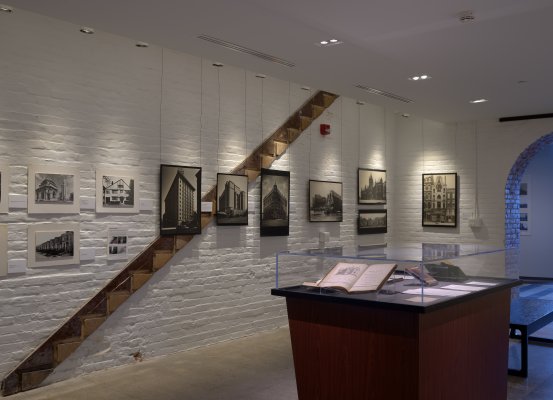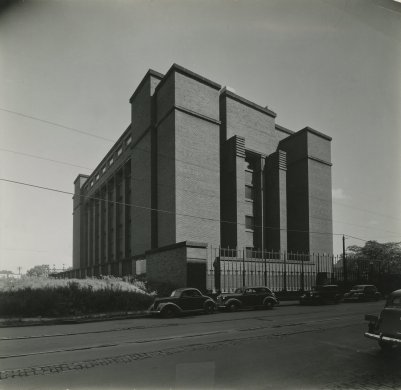Lenses: Ways of Seeing Buffalo and Its Architecture
Thursday, December 16, 2021–Sunday, April 10, 2022

Installation view of Lenses: Ways of Seeing Buffalo and Its Architecture (Lipsey Architecture Center at the Richardson Olmsted Campus, –Photo: Brenda Bieger for Buffalo AKG Art Museum
Presented by the Albright-Knox Art Gallery, the Buffalo History Museum, the Lipsey Architecture Center, and Preservation Buffalo Niagara and Sponsored by the Bauer Family Foundation, the Erie County Cultural Board, the New York State Council on the Arts, and the Preservation League of New York State
The Lipsey Architecture Center at the Richardson Olmsted Campus
Fridays–Saturdays, 10 am–4pm
Sundays, 12–4 pm
Closed between Christmas Eve and New Year’s Day
Lenses: Ways of Seeing Buffalo’s Architectural Legacy is a unique collaboration between four Buffalo institutions engaged in various aspects of the cultural life of our community. Preservation Buffalo Niagara, the Stanford Lipsey Buffalo Architecture Center at the Richardson Olmsted Campus, the Albright-Knox, and the Buffalo History Museum have come together to allow our community insight into how buildings and places in Buffalo have been valued and new more inclusive ways of seeing place-based value throughout our larger community.
Among architecture aficionados, Buffalo has long had a strong reputation as both a repository for great talent (as in Sullivan’s Guaranty Building) and an inspiration point for great talent (as in Le Corbusier’s relationship with our Grain Elevators). In 1940, the Albright Art Gallery invited Henry-Russell Hitchcock, Jr., widely considered the father of American architectural history, to make an exhibition about Buffalo’s architecture, mirroring one that then Director Gordon Washburn had seen mounted in Worcester, Massachusetts. The Buffalo exhibition, seen by more than 30,000 visitors to the museum during its month-long run, concluded with Mr. Hitchcock’s assertion:
“The hope of the future must lie at least as much in the establishment of a new and broader frame of planning, as in the erection of single buildings of distinction. The future ought also to provide some means of preserving the finer moments of the past, instead of allowing that indiscriminate destruction which has, during the present century, removed far more excellent buildings than have been built.”
No mere reprisal, Lenses: Ways of Seeing Buffalo’s Architectural Legacy is both based upon, and placed in counterpoint to, the original exhibition, in both intention and display. It takes a reflective, questioning view of Hitchcock’s pronouncements regarding which parts of Buffalo’s built environment have value and seeks to contextualize Hitchcock’s work by delving into city builders and social histories not represented in his work: women, African Americans, Indigenous people, and all of those outside of the “Great Man” theory of stylistic formalism that Hitchcock espoused.
The exhibition includes new graphical and written material in order to encourage visitors to reflect on how the privileged white male academic gaze has shaped how we perceive value in our built world, and how that perception of value has shaped what parts of its architectural legacy Buffalo has protected and what parts it has lost. The exhibit is designed to give attendees a more diverse and inclusive look at architectural and preservation values, and to encourage more equitable community building practices for the future.
In addition to the exhibition itself, a speakers series will take place March through April that will bring local, national, and international scholars and practitioners into Buffalo to discuss the themes of the exhibit in greater depth. More information will be posted soon.
